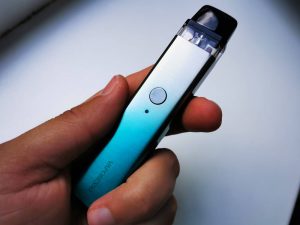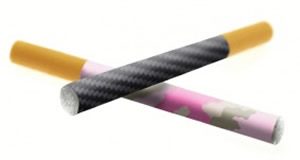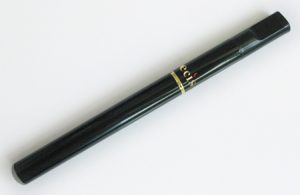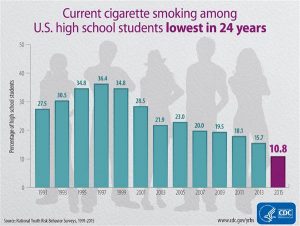Vaping Nicotine-Free E-Liquid, What’s the Point?
Vaping is usually associated with nicotine, but it doesn’t mean the two are inseparable. In fact, nicotine-free vaping is a lot more common than most people realize, and, as long as you’re doing it for the right reason, there is nothing wrong or weird about it.
 As you probably already know, nicotine is the addictive substance found naturally in the leaves of the tobacco plant, and the main reason why quitting smoking is so incredibly hard for most people. It’s easy for anti-nicotine zealots and certain public health experts to claim that quitting cold turkey is the best way to kick the habit, but unless you’ve actually smoked for several years, you can’t claim to understand how difficult it really is. So it makes sense for something designed as an alternative to tobacco smoking to contain nicotine, which is why the very first electronic cigarettes to hit the market were pre-filled with nicotine-containing e-liquid.
As you probably already know, nicotine is the addictive substance found naturally in the leaves of the tobacco plant, and the main reason why quitting smoking is so incredibly hard for most people. It’s easy for anti-nicotine zealots and certain public health experts to claim that quitting cold turkey is the best way to kick the habit, but unless you’ve actually smoked for several years, you can’t claim to understand how difficult it really is. So it makes sense for something designed as an alternative to tobacco smoking to contain nicotine, which is why the very first electronic cigarettes to hit the market were pre-filled with nicotine-containing e-liquid.
Although modern tobacco cigarettes are loaded with all kinds of chemicals designed to make nicotine assimilation by the human body as easy and as fast as possible, the truth is that the free-base nicotine and the nicotine salts in devices like the JUUL can do a good job of curbing nicotine addiction. It’s important to note that vaping doesn’t work for everybody, but that’s a whole other discussion.
So if it’s the nicotine that makes e-cigarettes effective alternatives to tobacco cigarettes, why would anyone ever bother vaping nicotine-free e-liquid? Well, a quick Google search will reveal several lists of questionable reasons why vaping without any nicotine is worthwhile, including satisfying your sweet tooth without the risk of addiction, or blowing big vapor clouds, but as far as I am concerned, there is only one good reason for it.
Nicotine may be the addictive ingredient in tobacco cigarettes, but it’s not the only thing that makes quitting smoking so hard. If it was just nicotine, than conventional nicotine replacement therapies like nicotine gum and patches would be much more effective in keeping people from going back to smoking. But they’re not, in fact their effectiveness over long periods of time is around 2%. The fact is there is more to smoking addiction than nicotine.
The psychological side of smoking addiction should not be underestimated. The hand-to-mouth motion that becomes part of our daily lives for years, sometimes decades, is hard to simply eliminate overnight, as are the inhalation and exhalation of smoke, and the need to do something with your hands when you feel like lighting a cigarette. That is why vaping is so much more effective in helping people quit smoking, compared to other nicotine replacement therapies.
With vaping, you can start with a relatively high nicotine content, something like 32mg/ml, or 24mg/ml, and then work your way down from there. If your goal is to eventually go nicotine-free or to eventually stop vaping as well, this is the recommended way to do it. Lower the nicotine content gradually, while giving your body and your brain enough time to adjust. This is a process that can take years, depending on the person, and should not be rushed.
Lower the nicotine content too fast, and you can do more harm than good. Studies show that as we consume nicotine, the number of nicotine receptors in our brain increases, but they don’t just simply go away when we stop consuming the addictive substance. So, in a way, we face a risk of relapsing for the rest of our lives, but, for some people, cutting off nicotine abruptly can actually increase the risk of going back to smoking.
But if everything goes according to plan, and you find yourself vaping e-liquid with a very low nicotine content – 3mg/ml for mouth-to-lung, or 1mg/ml for direct lung vaping – you can give nicotine-free vaping a try. This is, in my opinion, the only real reason to try vaping without nicotine!
Some people see nicotine-free vaping as a stage to a smoking and vaping-free life, and, honestly, that should be the end goal for all of us. As much as I support vaping as a less dangerous alternative to smoking, I know that it not 100 percent safe. Researchers at King’s College London and Queen Mary University of London, in the UK, consider vaping to be 95 percent safer than smoking, but while that means you are exposing yourself to much less health risks, it’s still not completely safe.
end goal for all of us. As much as I support vaping as a less dangerous alternative to smoking, I know that it not 100 percent safe. Researchers at King’s College London and Queen Mary University of London, in the UK, consider vaping to be 95 percent safer than smoking, but while that means you are exposing yourself to much less health risks, it’s still not completely safe.
Unfortunately, some vapers are never able to reach this end goal, and for them, nicotine-free vaping is a great way to keep themselves from ever going back to smoking. Beating nicotine addiction is an achievement in itself, so a lifetime of nicotine-free vaping is not that bad, especially when compared to a lifetime of smoking. Statistics show that cigarettes cause premature death in 50 percent of users, whereas vaping, despite all the scaremongering in the media, hasn’t killed anyone yet.
So there you have it, vaping nicotine-free e-liquid makes sense, if you managed to beat nicotine addiction and are either on your way to a vaping-free lifestyle, or you can’t fully ditch the smoking-related habits cultivated over decades of cigarette use.
Don’t let anyone fool you into thinking that vaping without nicotine is a safe way to experience tasty flavors without any risk of addiction, or that this makes vaping less toxic. Those are both dumb argument. If you don’t smoke tobacco, there is no reason for you to ever try vaping. Electronic cigarettes were designed as less dangerous alternatives to tobacco cigarettes, and that is how they should be treated. They are not some cool toys aimed at youths, and portraying them as such only hurts the vaping community.
















